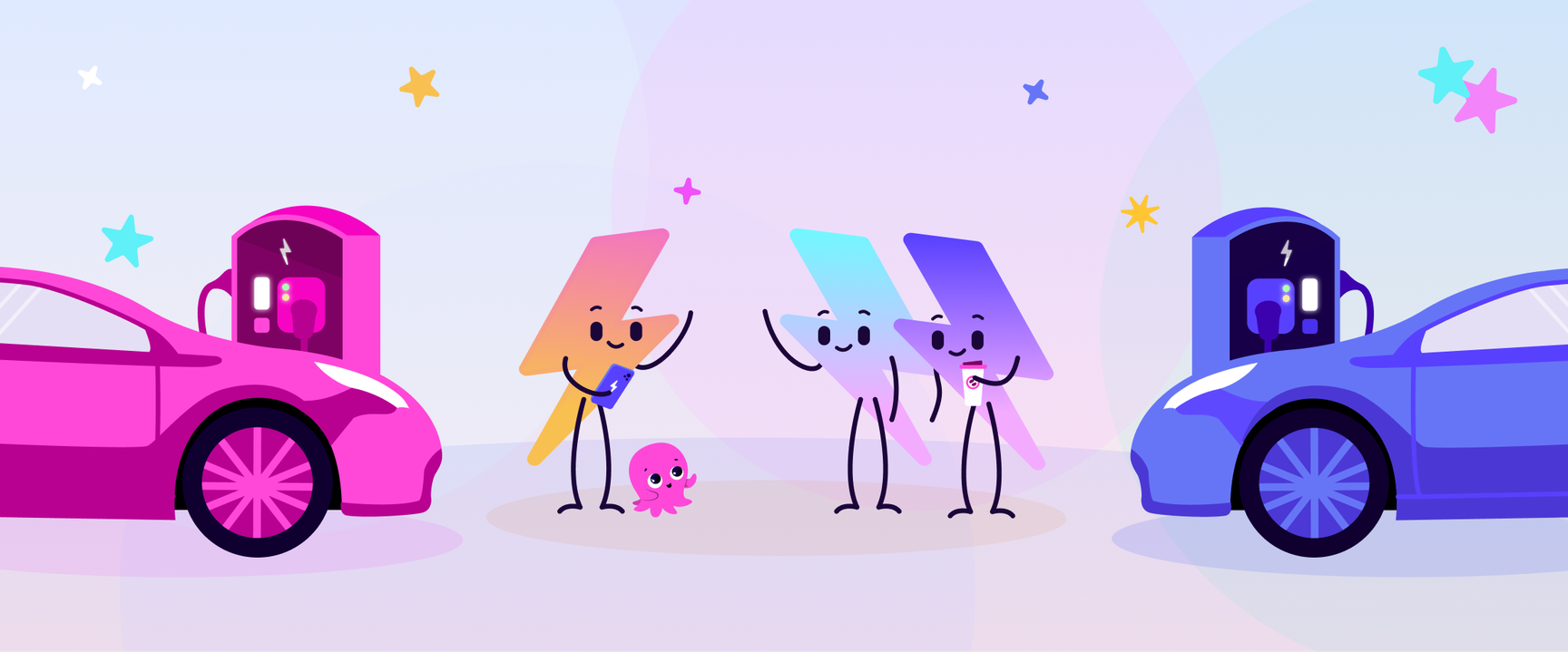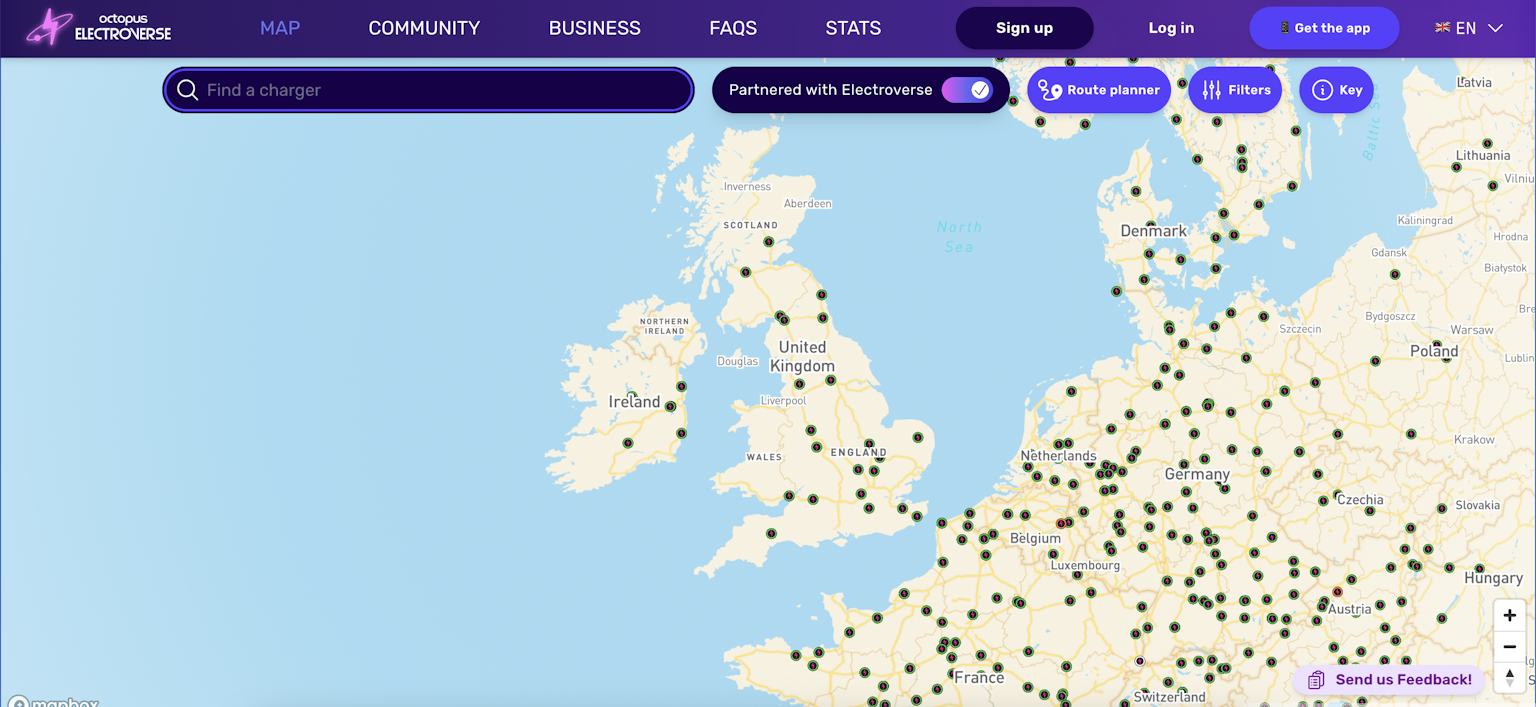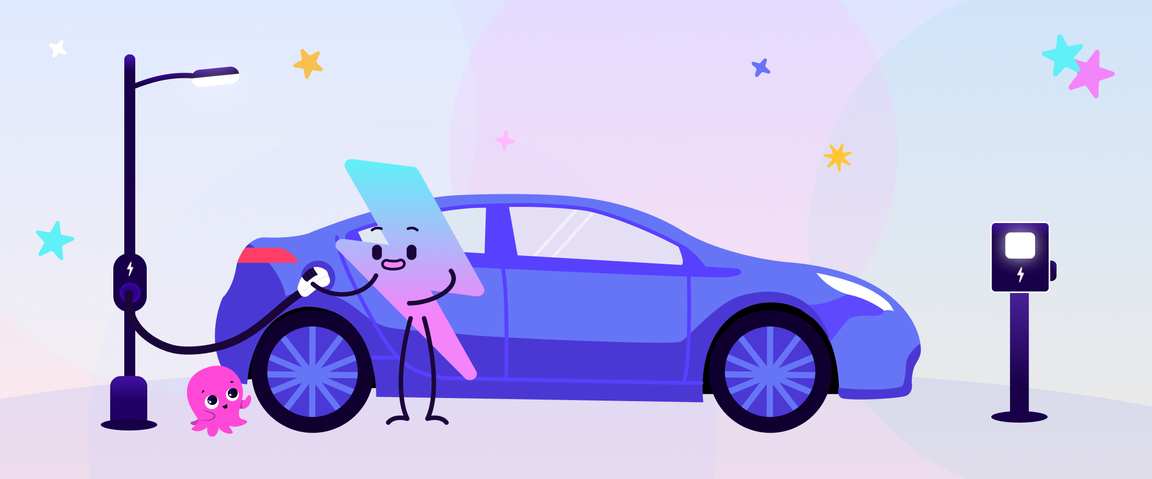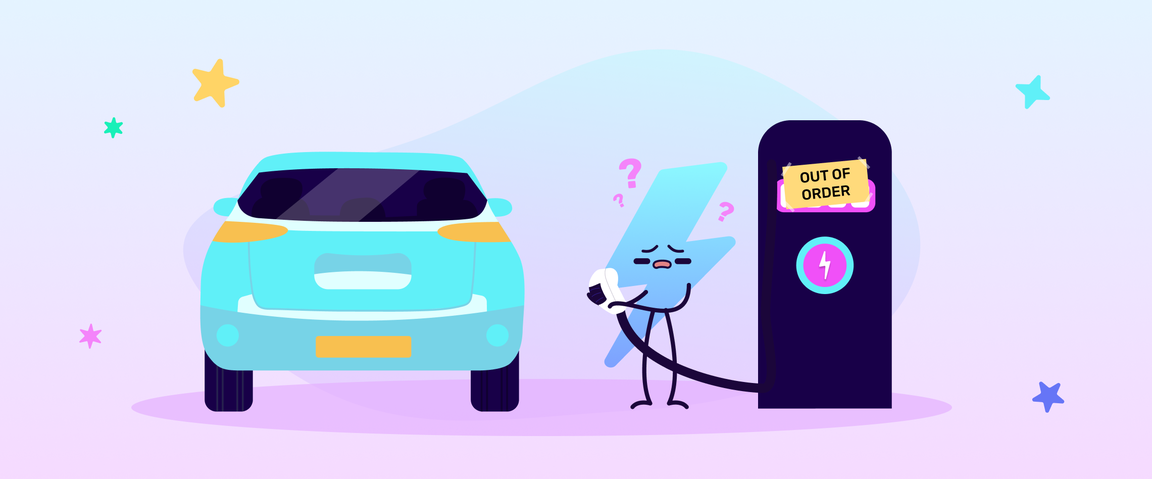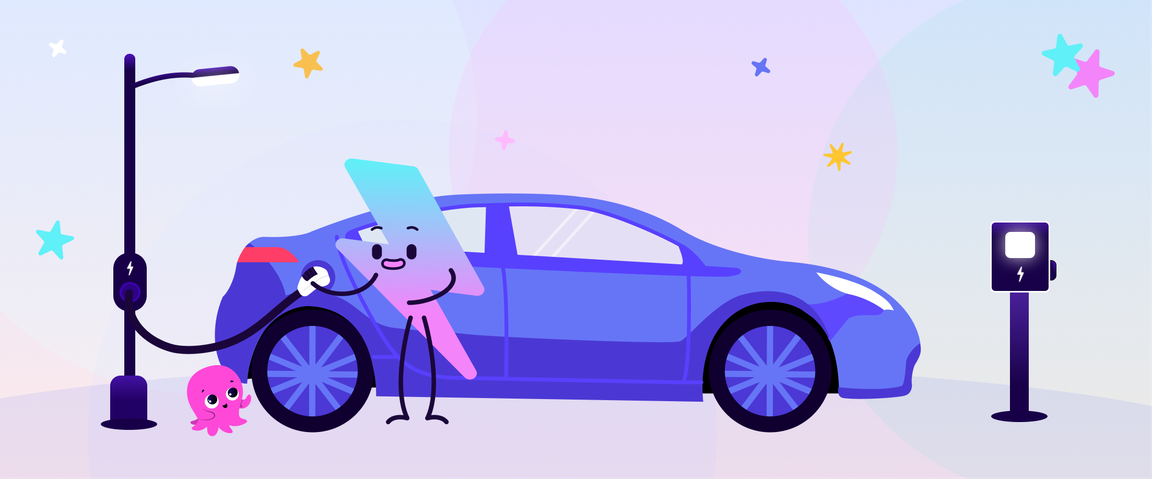February 2023
|Last updated:April 2024
What is Plug & Charge?
For EV drivers, RFID cards and apps have become ubiquitous with starting a charging session, but as EVs are large pieces of tech, will it ever be possible for an EV to communicate with a charging station and automatically initiate a charge?
Turns out… it's possible now.
Plug & Charge is the next generation of EV charging, but what does this actually mean? Which EVs are currently compatible? And how can you get set up with Plug & Charge on Octopus Electroverse?
Let’s get plugged in…
What is Plug & Charge?
Plug & Charge is a new technological concept from the International Organisation for Standardisation (IOS), offered as the future-proof way for seamless EV charging.
Currently, EV drivers must plug into a charge point and initiate a connection using an RFID card (such as the Electrocard), app or contactless payment. These methods act as a key to opening the charging lock. With Plug & Charge, the EV driver just needs to plug in, and the charge initiates automatically…
So, how does this work?
Plug & Charge depends on the charge point equipment and the EV both being compliant. A Plug & Charge connection can only establish once certain technical requirements and certifications are met:
The EV must be compatible with Plug & Charge and have a Plug & Charge certificate installed - you can find more information on certification in the steps below.
The charge point must have Plug & Charge capability implemented (this is the responsibility of the charge point operator e.g. Fastned, Osprey, MER). As it stands, only IONITY charge points are compatible with Plug & Charge.
If both of these requirements are met, once the EV is plugged into the charge point, an encrypted connection establishes - also known as a TLS (transport layer security) handshake. Incidentally, this is what differentiates Plug & Charge from Autocharge.
During this handshake, the charge point presents its digital certificates to identify its legitimacy - the EV will verify these certificates to inspect signatures and expiration dates. If verified successfully, the TLS handshake is complete, and the charge will start within a few seconds!
Which vehicles are compatible with Plug & Charge?
To be compatible with Plug & Charge, the EV must have been produced from July 2022 or have a Plug & Charge compatible software update. Current compatible EVs include:
Volkswagen (with ID.software version 3.1 or newer)
Cupra (with ID.software version 3.1 or newer)
Skoda Auto (with ID.software version 3.1 or newer)
BMW (make sure you have the latest software update)
i5
iX2
i7 models produced after July 2023
iX1 models produced after November 2023
iX models produced after July 2023
If you believe your vehicle is eligible but aren't sure whether you have the correct software installed, get in touch with your vehicle manufacturer - they'll have the answer!
I know my vehicle is capable of Plug & Charge, but it’s not on your list… why?
Although we’re seeing more and more vehicle manufacturers adding Plug & Charge capabilities to their EVs, only some are implementing it in a completely open way. For instance, some manufacturers only allow you to install Plug & Charge certificates if you subscribe to one of their charging tariffs. Not very helpful.
As such, we’ve only listed vehicle makes and models from manufacturers we know allow Plug & Charge certificates created by a third party.
We try keeping this list up-to-date, but there can sometimes be a delay while we test out the certificate installation process for those manufacturers that are a little newer to third-party Plug & Charge. If you have any questions about this, just reach out!
Where can I use the Plug & Charge functionality?
At any IONITY location! Use the Electroverse map to find your nearest IONITY charge point.
How do I pay with Plug & Charge?
Through your Electroverse account! Payment will be taken through your linked payment method (i.e. debit/credit card or Octopus account).
To learn more about billing frequency and payment methods, check out our FAQs.
How to install Plug & Charge
1. If you think you have a compatible vehicle, please register your eligibility here.
2. As part of the certification process, users will need to enter their registration plate number to check the eligibility of the vehicle. By entering the reg number, the vehicle's VIN/chassis number will be located through the DVLA lookup function and the PCID will be created.
If the registration number fails to present the correct vehicle, users can instead manually enter their VIN (vehicle identification number)/chassis number.
The VIN/chassis number is a 17-character code found at the bottom of an EVs windscreen on the passenger's side. Alternatively, it can also be found in the V5 vehicle registration document.
3. Once the PCID has been confirmed by the EV driver, a Plug & Charge certificate is created by the vehicle manufacturer (e.g. Volkswagen). This certificate protects the vehicle and user data during the Plug & Charge process by securing communication through encryption, decryption, and two-way authentication. The Octopus Electroverse team will send this certificate for the EV driver to accept and install in their vehicle (via the EV manufacturer app).
4. Once installed, the Plug & Charge functionality will be ready to use with any compatible charge point! Currently, you can use Plug & Charge at any IONITY location! Use the Electroverse map to find your nearest IONITY charge point.
To use Plug & Charge, simply plug in your EV, and wait 10-15 seconds for the session to start. We'd advise keeping an eye on the IONITY unit just to make sure the charge starts smoothly!
Feeling enlightened, or do you think something was missing? Let us know by sharing your feedback.
Interested in learning more? Head over to our Electroverse Community area for more electrifying content.
